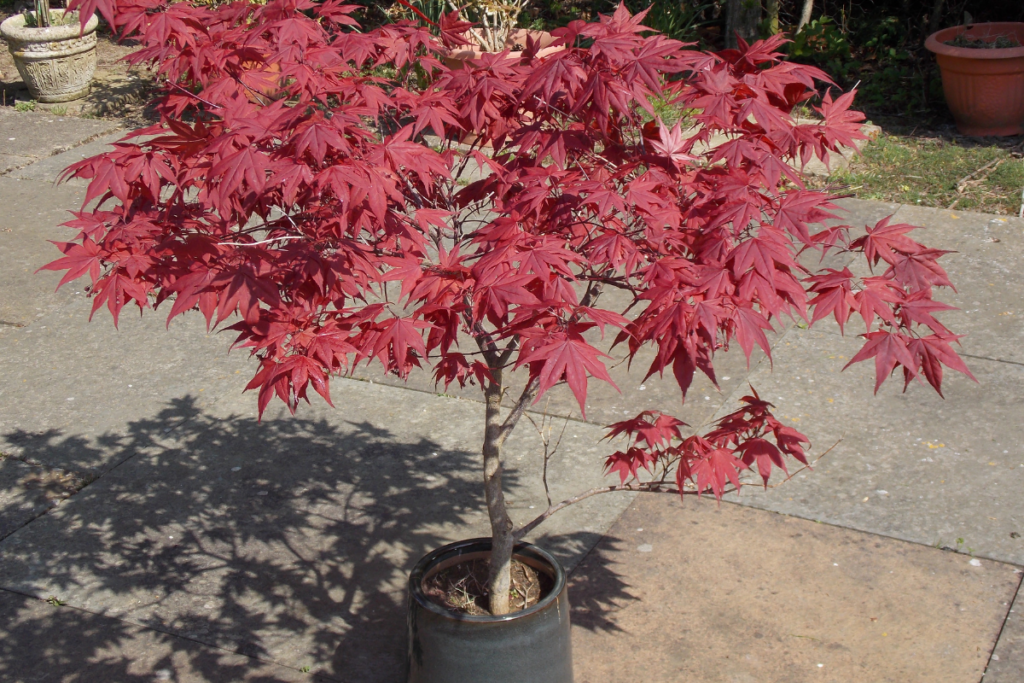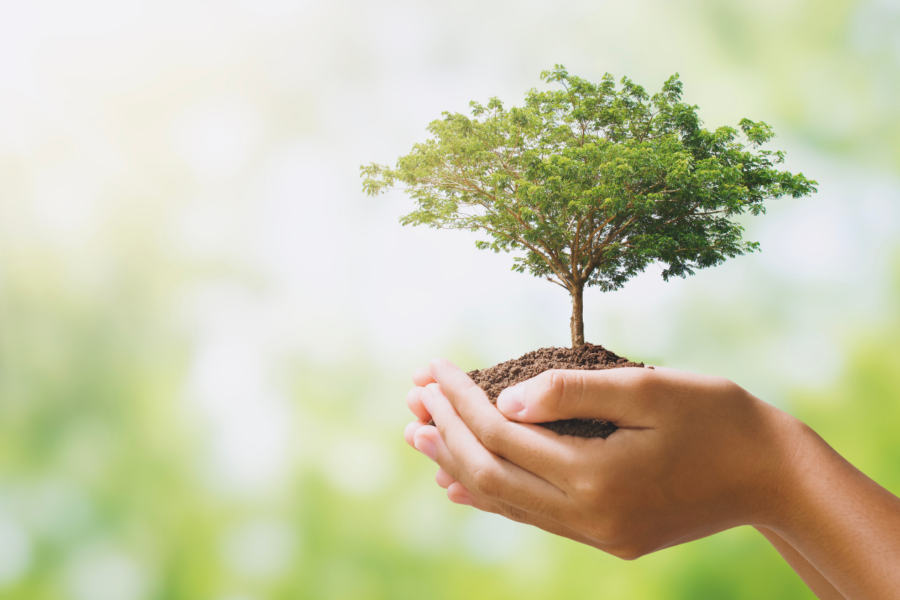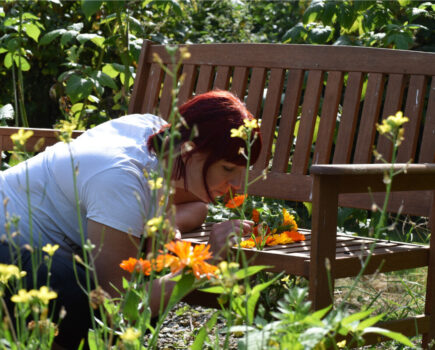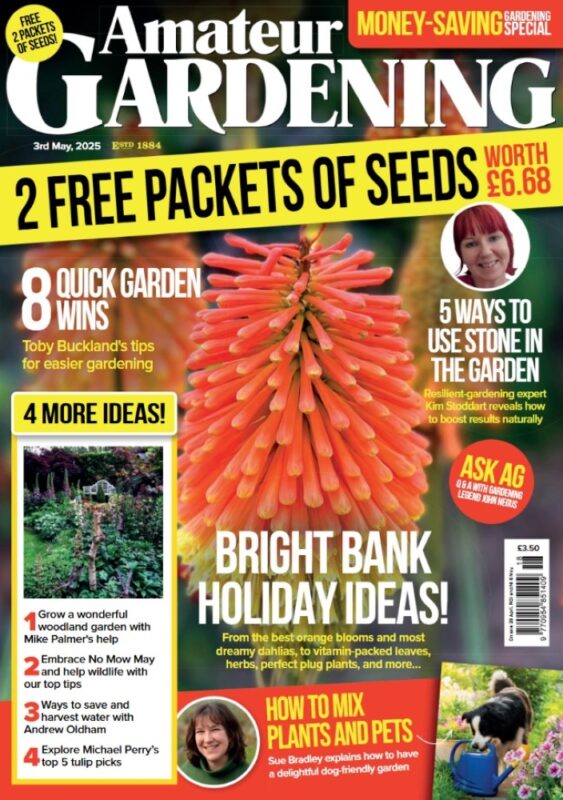Cassie King from British Garden Centres outlines some top tips for effective tree planting
The addition of trees brings numerous benefits to any garden and now is the perfect time to get planting. As well as affording design rewards such as privacy, shade and looking good, trees also provide valuable habitats and food for wildlife, absorb carbon, reduce pollution, prevent erosion and help offer some protection from greater extremes of weather such as excessive rain and heat.

For small spaces, ornamental trees with slow growth and compact habits are perfect. Planting at this time of year can help reduce stress and watering needs, allowing your trees to establish over the winter months and be ready to thrive in spring.
Factors to consider before planting your tree
It is possible to plant trees both in the ground and in containers. Pots are a great solution if you have limited space. However, before planting your trees, it is essential to ensure that they are suitable for the soil and climate of your garden. You should also consider their growth characteristics, such as height and spread, to make sure that they can fit well within the available space. This information can usually be found on the plant label.
If you are planning to plant trees in containers, we recommend using pots that are approximately 50cm in diameter. When selecting a pot, make sure it is sturdy and durable, made of insulated materials like terracotta or wood, and can withstand frost and cold weather.
What tree to plant?
Fruit trees for your five-a-day

Dwarf rootstock apple trees can be grown successfully in flower beds or containers. We recommend varieties, such as ‘Cox’s Orange Pippin’, ‘Golden Delicious’, ‘Greensleeves’, ‘Hereford Russet’, and ‘Red Windsor’. These varieties are known for their juicy, aromatic fruit with a distinctive flavour.
If you’re looking for a pear tree, why not try the ‘Concorde’ or ‘Conference’ varieties? This tree is naturally compact, self-fertile, and produces a bountiful harvest of fruit.
Figs are also a great option for container gardening, as they tend to produce more fruit when grown in a confined space. These low-maintenance trees have attractive large, lobed leaves that make them a decorative and structural addition to the garden. The ‘Brown Turkey’ and ‘Brunswick’ varieties are both popular choices among UK gardeners, as they are renowned for their prolific fruiting.
TIP: Look for bare-root fruit trees and bushes at the garden centre. When ready to plant, simply soak the roots in a bucket of water for about thirty minutes, before planting them in the ground or container
Ornamental trees

Japanese maples and acers are exquisite small trees that with their vibrant red and orange leaves.
Other ornamental trees that are popular to plant at this time of year, include the flowering cherries, magnolias, and weeping willows. These trees offer a wide range of leaf sizes, shapes, and colours, with some showcasing spectacular spring blooms and others boasting stunning foliage.
TIP: For optimal growth, it’s crucial to plant them in a location protected from strong winds and direct sunlight and keep them hydrated during summers. Pruning is generally unnecessary since they grow slowly and remain compact, but it’s recommended to remove any dead or diseased branches.
Evergreen trees

Conifers are an excellent choice for those looking for low-maintenance yet attractive garden options. They provide year-round colour and come in a diverse range of shades, textures, shapes, and sizes, making them highly versatile. Many conifers can be grown successfully in containers or in the ground, Cupressus ‘Wilma’ is an ideal option with a lemon scent that can be enjoyed by brushing against the foliage. Another option is Cypress ‘Baby Blue’, which illuminates pots with its silver-blue sprays. Trees such as pine, spruce, and cedar will provide endless greenery too.
Other evergreens to consider planting now include eucalyptus with its distinctive silvery-blue foliage, and ligustrum, also known as the popular and highly desirable Chinese privet. Bay trees are renowned for their fragrance and are widely used in topiary. A potted bay tree is a stylish and aromatic addition to a kitchen garden, and its leaves are great for picking all year round for cooking. It also adds a feature statement when framing doorways, patios, or balconies.
TIP: Sprinkle a handful of bonemeal or a general fertiliser around the tree in early spring and again a month later. For conifers, we recommend a high-nitrogen feed to increase the growth rate and improve foliage colour.
Top Tips for Trees
Choose your location: To find a suitable location in your garden for a tree to grow, ensure that there is enough space, and it receives adequate sunlight. The area should have well-draining soil. Also, consider the proximity of other plants and structures to prevent potential issues as the tree grows.
Digging your hole: Begin by digging a hole that is two to three times wider than the tree’s root ball and slightly shallower. Break up the soil at the bottom of the hole so the tree’s roots can establish and spread out. This will help to promote healthy growth and ensure that your tree gets off to a good start.

Planting: Gently separate the roots and place the tree in the centre of the hole you have dug. Make sure the top of the root ball is even with, or slightly above, the surrounding soil level. Fill the hole with the soil you removed, gently patting it down to remove any air pockets. Stake if necessary to protect against the elements.
Watering and Mulching: Ensure the newly planted tree is regularly watered, especially during dry periods. Apply a layer of organic mulch around the base of the tree, making sure to leave a small gap between the mulch and the tree trunk. This will help prevent any issues related to excess moisture.

http://www.britishgardencentres.com
Find more tips, advice and articles like this at the Amateur Gardening website. Subscribe to Amateur Gardening magazine now.





